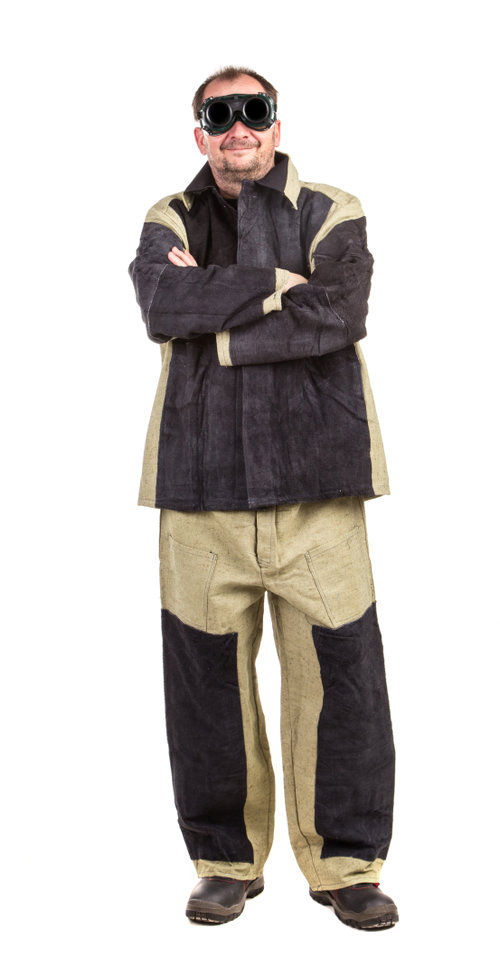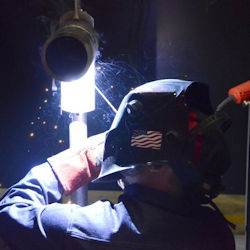Light Gas Welding and Cutting
Some light gas welding and cutting jobs require no special protective clothing other than gauntlets and goggles, if you wear regular work clothing correctly. Wearing clothing in the manner described below decreases the probability that sparks will lodge in folds of cloth, such as rolled-up sleeves and cuffs, pockets, or the shirt collar.
- Roll sleeves down, button collar and cuffs. Eliminate pockets not protected by button-down flaps from the front of work clothing.
- Do not turn trouser cuffs up on the outside. All other clothing should be free of oil and grease.
- Wear high-top or safety shoes, instead of low-cut shoes with unprotected tops.
Medium and Heavy Welding
During medium and heavy welding, specially designed flameproof clothing made of leather, or other suitable material, may be required. Clothing consists of aprons, sleeves, a combination of sleeves and bib, jackets, and overalls.
Consider the following when selecting protective clothing:
- Wear capes to protect the back of the neck, top of the shoulders, and upper part of the back and chest.
- Bibs combined with the cape and sleeves give added protection to the chest and abdomen in jobs where protection for the lower part of the back is not required.
- Wear the jacket only when complete all-around protection for the upper part of the body is required.
- Aprons and overalls provide protection to the legs.
- For very heavy work, wear fire-resistant leggings or high boots. Do NOT wear shoes or boots that have exposed nail heads or rivets.
Overhead Operations
During overhead welding operations, it is important to wear additional personal protective equipment (PPE) to protect against burns and falling objects.
- Wear leather caps under helmets to prevent head burns.
- Where the welder may be exposed to sharp or heavy falling objects attach hard hats or head protectors in such a way as to form a part of the welding helmet.
Knowledge Check Choose the best answer for the question.
2-10. What should welders wear during overhead welding to prevent head burns?
You forgot to answer the question!


